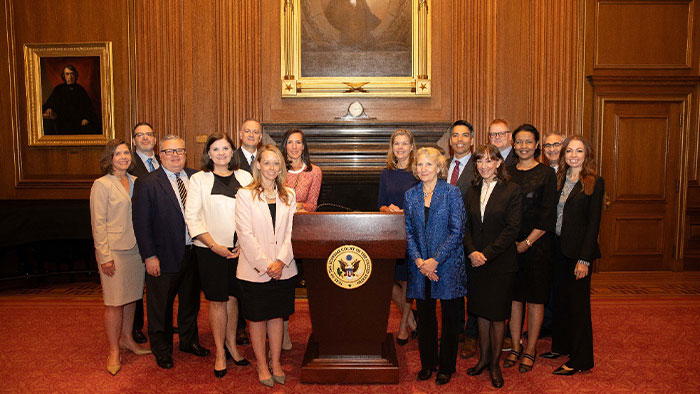How Retail Internal Audit Departments can Stay Relevant
Webinar Recap
- By [ Tom Casey , Kathleen McGuigan ]
- 08/04/2020
RILA recently partnered with KPMG, Ocean Audit, and PRGX to host an educational webinar discussing customer sentiment and the impact of emerging COVID-related risks on companies’ audit plans as well as how retailers can use cost take back initiatives to increase capital and liquidity. Guest speakers included: Ivor O’Neill, Director, KPMG; Steve Ferreira, CEO, Ocean Audit; Jim Albrecht, VP of Audit Operations, PRGX; and Amy Andrade, VP of Global Accounts, PRGX.
O’Neill discussed KPMG’s most recent research on customer sentiment and how companies can use these insights to gain an understanding of new and emerging risks for retailers. He also noted that retail internal audit teams have been looking for risk in wrong places with 94% of assurance time allocated to 14% of drivers of loss. Key points:
- Consumers fell into four archetypes based on behaviors (“Hit Hard and Cutting Deep,” “Proceed with Caution,” “Hunker Down and Save,” and “Ready to Roll”). O’Neill noted that over the past few months a higher percentage of younger generations have been shopping in-store more frequently than older generations, however whether this trend will continue will depend on the course of the coronavirus crisis.
- Suggestions for potential higher risk and value audit areas impacted by COVID-19:
- Online processes - reflecting the exponential growth in e-commerce sales;
- Inventory management – managing out of date and out of position inventory;
- Supply chain – potential impact of 2nd wave of virus impacting sourcing, transportation and distribution;
- Human resources and talent – ensuring talent decisions are made with short- and long-term ramifications in mind; and
- Cost takeout – areas to cut leakage and positively impact working capital.

Albrecht and Andrade, PRGX, covered strategies and ideas that internal audit teams can utilize when trying to identify, prioritize, and execute cost take back/recovery and compliance audits. Noting that most retailers have mature goods for resale (GFR) audits, the biggest new opportunity for retailers is audits of goods not for resale (GNFR) expenses. Session highlights:
- Internal audit teams should consider GNRF areas impacted by COVID-19 for future audits. e.g., telecom, IT, sanitization, and facilities.
- An initial decision retailers must make when contemplating a GNRF audit is the audit objective (cost recovery audit with goal of an immediate cash return or compliance audit with goal of contract compliance with longer term cost savings as well as better service and compliant products)
- Other factors to consider:
- program budget – which department(s) will pay cost of audit;
- program management - which department(s) need to be involved and who will take lead;
- stakeholder buy-in - recommended proactively partnering will all internal stakeholders before beginning audit(s);
- ease of access to information needed for audit – internally or with vendor/service provider; and
- vendor selection – high risk or high value.
Ferreira, Ocean Audit, detailed ways that internal audit executives can unblock and recover lost working capital from the over payment of international ocean freight invoices.
- US importers lose an estimated $5B in working capital because of inaccurate ocean freight invoicing.
- Its estimated that ocean freight costs more than two (2) to five (5) times traditional delivery methods (e.g., air and land transportation freight)
- The combination of continually fluctuating ocean freight rates, archaic invoicing systems used by carriers leading to a high percentage of inaccurate invoices, and a three-year statutory look back period (which may be tolled as well depending on the circumstances) create a unique opportunity for retailers to recover overpayments.
- Factors to consider when balancing challenges of managing ocean freight audits inhouse verses using external resources: subject matter expertise and depth of resources needed for three-year audit.
For more information on RILA’s Internal Audit Committee, please contact Kathleen McGuigan, EVP & Deputy GC at kathleen.mcguigan@rila.org or Tom Casey, VP Legal Affairs at tom.casey@rila.org.
Tags
-
Legal Affairs & Compliance
-
Finance


